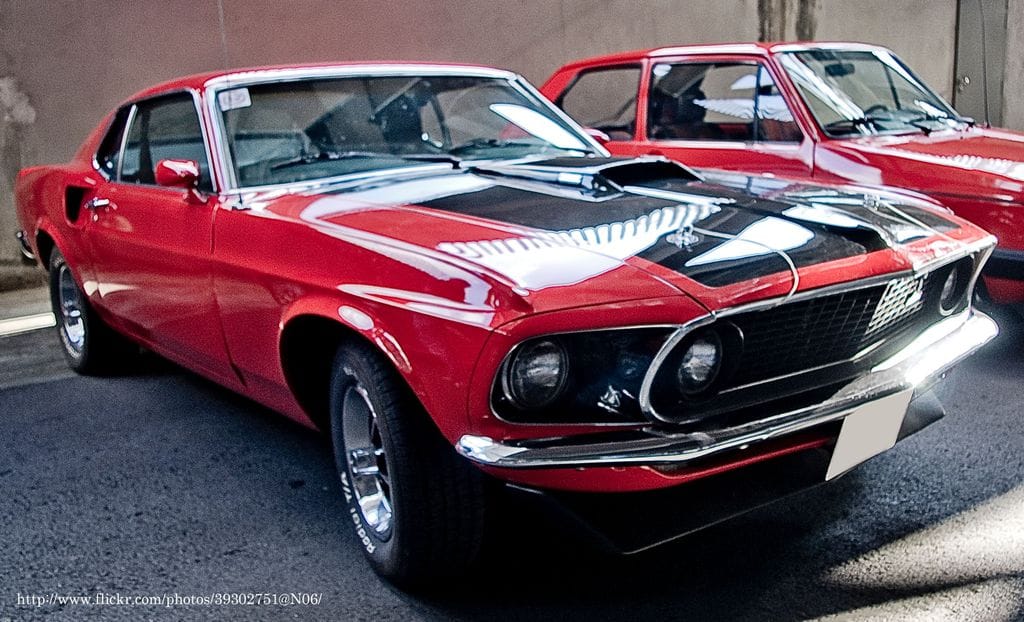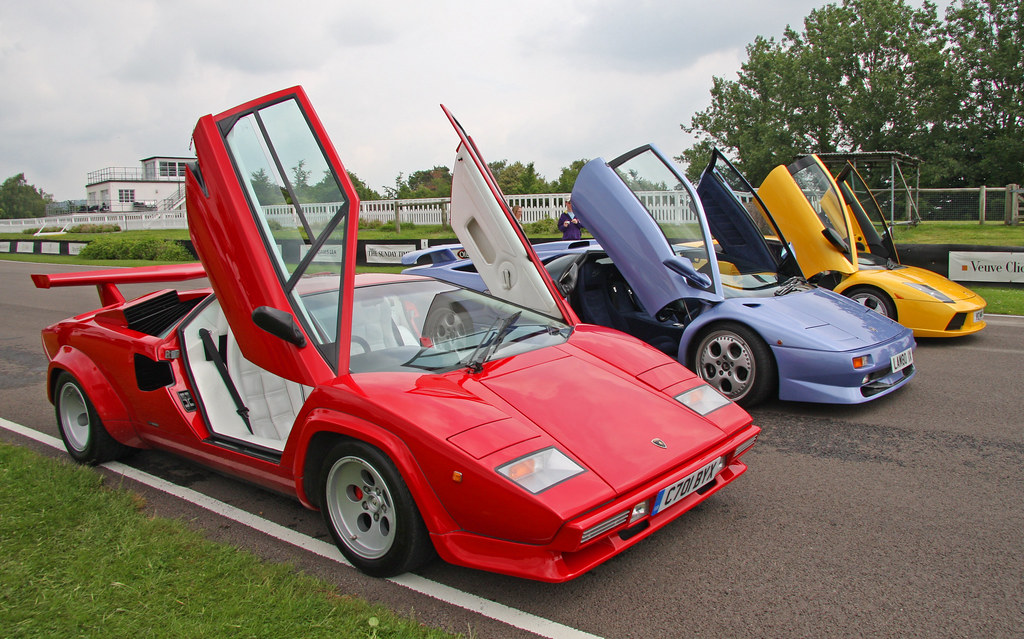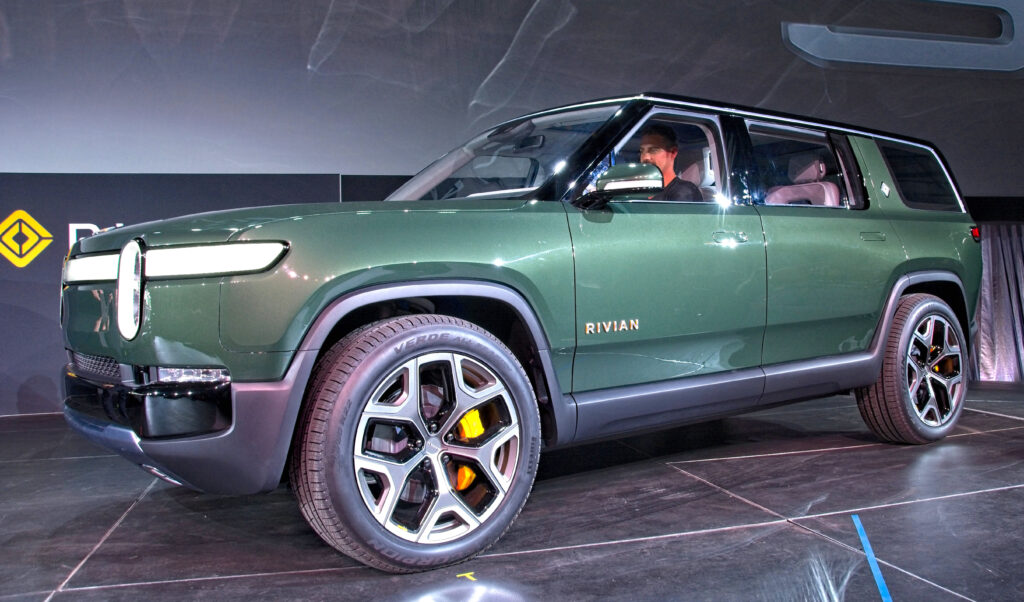
The automotive world is a dynamic, ever-evolving beast, constantly churning out new designs and innovative technologies. But sometimes, just sometimes, manufacturers remember the magic of yesteryear. We’ve seen a fascinating trend emerge over the past two decades: the resurrection of beloved, often iconic, nameplates that had long been consigned to the history books. It’s like watching your favorite band get back together for one last, glorious tour, except it’s with turbocharged engines and hybrid powertrains.
This isn’t just about slapping an old badge on a new car; it’s a delicate dance between nostalgia and innovation. Automakers are betting big that the emotional connection enthusiasts have with these dormant legends can translate into modern-day sales. The results, as we’ll explore, have been a thrilling mix of roaring successes, intriguing experiments, and a few head-scratching misses. From rugged off-roaders to sophisticated sports cars, these resurrected machines tell a compelling story of changing tastes, technological advancements, and the enduring power of a truly great design.
So, what drives these comebacks? Sometimes it’s a craving for authenticity in a homogenized market, other times it’s a strategic move to tap into a wellspring of enthusiast passion. Whatever the reason, we’re here to peel back the layers on 14 such incredible stories, diving deep into why these iconic body styles vanished and how they roared back to life. Grab your favorite beverage, settle in, and let’s get into the metal and myth of these automotive phoenixes.
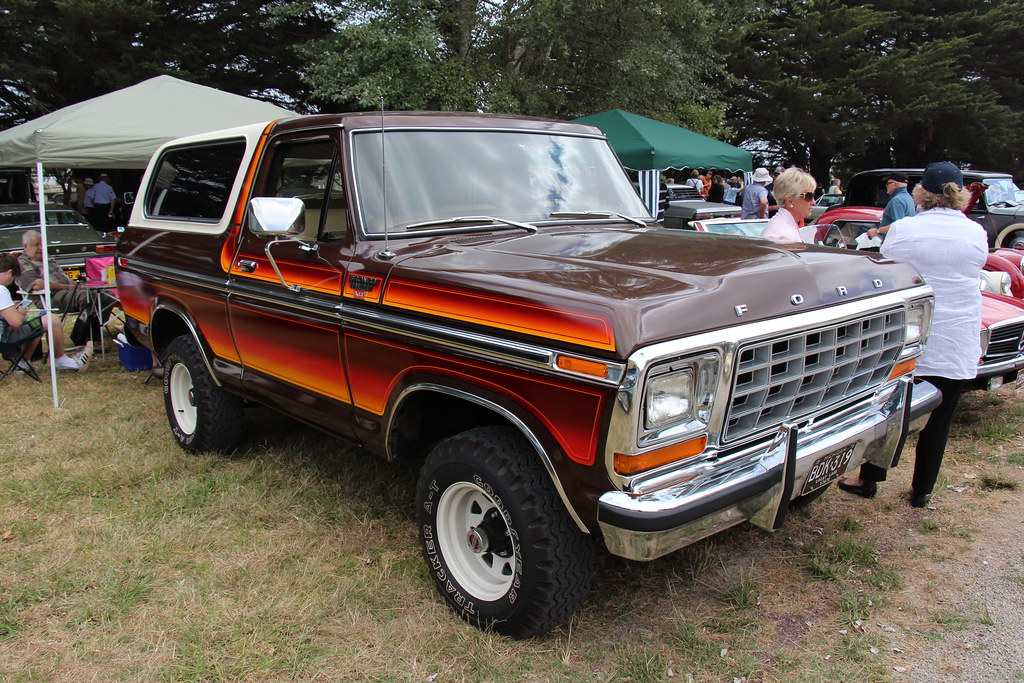
1. **Ford Bronco**Few recent revivals have captured the public imagination quite like the Ford Bronco. For nearly a decade, the first-generation Bronco, produced from 1966 to 1977, was a hot favorite among collectors, seeing its values steadily climb. It was a rugged, two-door SUV that eventually grew into a full-size model in 1978, stepping up its game against Chevrolet’s Blazer. While the full-size Bronco enjoyed a respectable run through five generations until 1996, and even had a smaller sibling in the Bronco II, neither truly recaptured the raw, untamed spirit of that original icon.
Then came the silence. The nameplate lay dormant, a legend whispered among off-road enthusiasts. Ford, however, knew what it had. A concept for a new Bronco teased fans at the Detroit Auto Show 14 years after its initial disappearance, igniting a fervent hope that the rumors of its return would finally materialize. And boy, did they. The excitement was palpable, a testament to the original’s enduring legacy.
The 2020 Ford Bronco arrived with a thunderous roar, built on the robust ladder frame underpinning the Ford Ranger pickup. It promised – and delivered – impressive off-road capabilities, immediately positioning itself as a direct competitor to the venerable Jeep Wrangler. Ford leaned heavily into that delicious nostalgia, crafting an old-school look and even hiding delightful “Easter eggs” around the vehicle that referenced its rich history. The strategy was a smash hit, with the Blue Oval selling over 116,000 examples in 2024 alone, racking up strong reviews and proving that sometimes, all you need to do is listen to the fans and deliver a truly authentic resurrection.
Car Model Information: 1970 Ford Bronco
Name: Ford Bronco
Caption: 2021 Ford Bronco Outer Banks (4-door)
Manufacturer: Ford Motor Company
Production: 1965–1996,2021–present
Class: Compact SUV
Layout: Front-engine, four-wheel-drive
BodyStyle: SUV
Successor: Ford Expedition
ModelYears: 1966–1996,2021–present
Categories: 1970s cars, 1980s cars, 1990s cars, 2020s cars, All-wheel-drive vehicles
Summary: The Ford Bronco is a model line of SUVs manufactured and marketed by Ford. The first SUV model developed by the company, five generations of the Bronco were sold from the 1966 to 1996 model years. A sixth generation of the model line was introduced for the 2021 model year. The nameplate has been used on other Ford SUVs, namely the 1984–1990 Bronco II compact SUV, the 2021 Bronco Sport compact crossover, and the China-only 2025 Bronco New Energy.
Originally developed as a compact off-road vehicle using its own chassis, the Bronco initially competed against the Jeep CJ-5 and International Scout. For 1978, Ford enlarged the Bronco, making it a short-wheelbase version of the F-Series pickup truck; the full-size Bronco now competed against the Chevrolet K5 Blazer and Dodge Ramcharger.
Following a decline in demand for large two-door SUVs, Ford discontinued the Bronco after the 1996 model year, replacing it with the four-door Ford Expedition; followed by the larger Ford Excursion. After a 25-year hiatus, the sixth-generation Bronco was reintroduced in 2021 as a mid-size two-door SUV. It is also offered as a full-size four-door SUV with a 16 in (41 cm) longer wheelbase. It competes directly with the Jeep Wrangler as both a two-door and a four-door (hardtop) convertible.
From 1965 to 1996, the Ford Bronco was manufactured by Ford at its Michigan Truck Plant in Wayne, Michigan, where it also manufactures the sixth-generation version.
Get more information about: Ford Bronco
Buying a high-performing used car >>>
Brand: Ford Model: Bronco
Price: $79,999 Mileage: 3,000 mi.
Read more about: The Ultimate Encore: 10 Cherished Cars That Rose From the Ashes, Reigniting Our Automotive Passion!

2. **Fiat 500**Ah, the Fiat 500, or “Cinquecento” as it was affectionately known. This tiny, economical city car, produced from 1957 to 1975, was more than just transportation; it was a cultural icon across Europe, much like its German counterpart, the Volkswagen Beetle. Initially, it wasn’t an instant sensation compared to its larger, more competitively priced sibling, the 600. However, Fiat quickly learned, reworking the car with better equipment, more power, and a lower price point. Throughout the 1960s, its popularity exploded, helping cash-strapped Italians get on the road in style, its unique styling remaining largely unchanged during its impressive production run of over 3.8 million examples.
When the 500 was discontinued in 1975, replaced by the 126, the nameplate entered a long slumber that lasted for decades. Many wondered if such an inimitable, characterful car could ever be brought back without losing its soul. Fiat took the plunge in 2007, reviving the 500 with a modern design that skillfully captured the original’s undeniable charm, albeit with a contemporary front-engine, front-wheel-drive layout. The revived 500 was an instant commercial smash hit in Europe, quickly surpassing three million units sold by 2019.
However, the path of resurrection is rarely without its bumps. Fiat controversially axed the beloved gas-powered 500 in favor of an all-electric 500e, a move that saw demand slump significantly, leading to a pause in production in late 2024. But fear not, fans of cheeky Italian motoring! Fiat has since reversed course, planning to relaunch the 500 as a hybrid in late 2025. It’s a testament to the nameplate’s enduring appeal that even after multiple lives, this little car continues to adapt and charm.
Read more about: Seriously Where Did They Go? 9 Classic Sedans That Vanished From Our Streets.
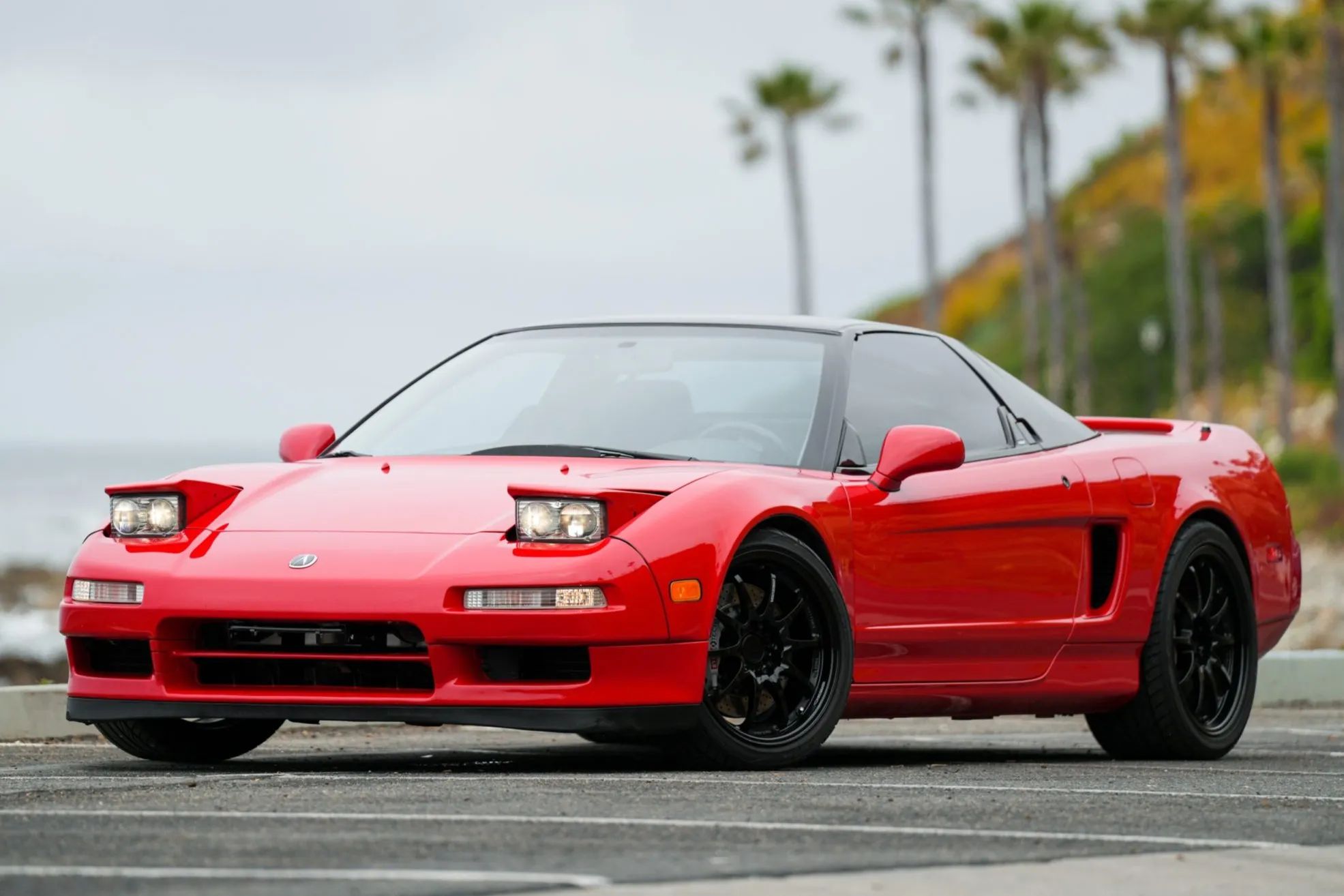
3. **Acura NSX**The original Honda NSX, marketed as the Acura NSX in the U.S., burst onto the scene in 1989 and 1991, utterly stunning the automotive world. This wasn’t just another sports car; it was a mid-engine marvel boasting cutting-edge technology, including an aluminum structure, a 270-horsepower all-aluminum DOHC VTEC V-6 with an incredible 8500 rpm redline, and even titanium connecting rods. It delivered Ferrari-level performance with the kind of unflappable Honda reliability and comfort that European exotica could only dream of, cementing its status as a pioneer for the supercar segment as a whole.
But even legends have their limits. As the Japanese economic bubble burst, Honda found itself without the spare funds needed to keep developing the car. By the time production ended in 2005, the NSX, while still brilliant, was no longer the unique, market-beating supercar it had once been. For over a decade, enthusiasts yearned for its return, often speculating what a modern NSX might look like in an era of rapidly advancing technology.
In 2016, Acura brought the NSX back for a second generation, once again promising a distinctively Japanese take on the supercar. This new iteration was an all-wheel-drive hybrid, combining a twin-turbo V-6 with three electric motors to deliver a combined 573 horsepower. It was practical, easy to live with, and certainly fast enough to keep pace with contemporary European rivals. Despite its technological prowess and performance pedigree, sales have remained underwhelming, with only 161 units sold in the first seven months of a particular year, indicating that some magic from the original was hard to replicate. The car received a send-off in 2022 with the launch of the NSX Type S, and while further details are sparse, a new, all-electric successor is reportedly in the works, suggesting that the NSX saga is far from over.
Car Model Information: 1992 Acura NSX Base
Name: Honda NSX
Caption: Acura NSX (first generation, NA2) along with some NA1 NSX cars
Manufacturer: Honda
Aka: Acura NSX (North America)
Production: 1990–2006 (NA1/2),2016–2022 (NC1/2)
Class: Sports car
ModelYears: 1991–2006,2017–2023
Categories: 2000s cars, 2010s cars, 2020s cars, 24 Hours of Le Mans race cars, All-wheel-drive vehicles
Summary: The Honda NSX, marketed in North America as the Acura NSX, is a two-seater, rear mid-engined, rear-wheel drive sports car manufactured by Honda.
The origins of the NSX can be traced back to 1984, with the HP-X (Honda Pininfarina eXperimental) concept, for a 3.0 L (180 cu in) V6 rear mid-engine, rear-wheel drive sports car. Honda, with the intention of meeting or exceeding the performance of the then V8 engine Ferrari range, committed to the project, aiming at both reliability and a lower price. The concept evolved and had its name changed to NS-X, which stood for “New”, “Sportscar” “eXperimental”, although the production model launched as the NSX.
Get more information about: Honda NSX
Buying a high-performing used car >>>
Brand: Acura Model: NSX
Price: $93,999 Mileage: 62,145 mi.
Read more about: The Ultimate Encore: 10 Cherished Cars That Rose From the Ashes, Reigniting Our Automotive Passion!
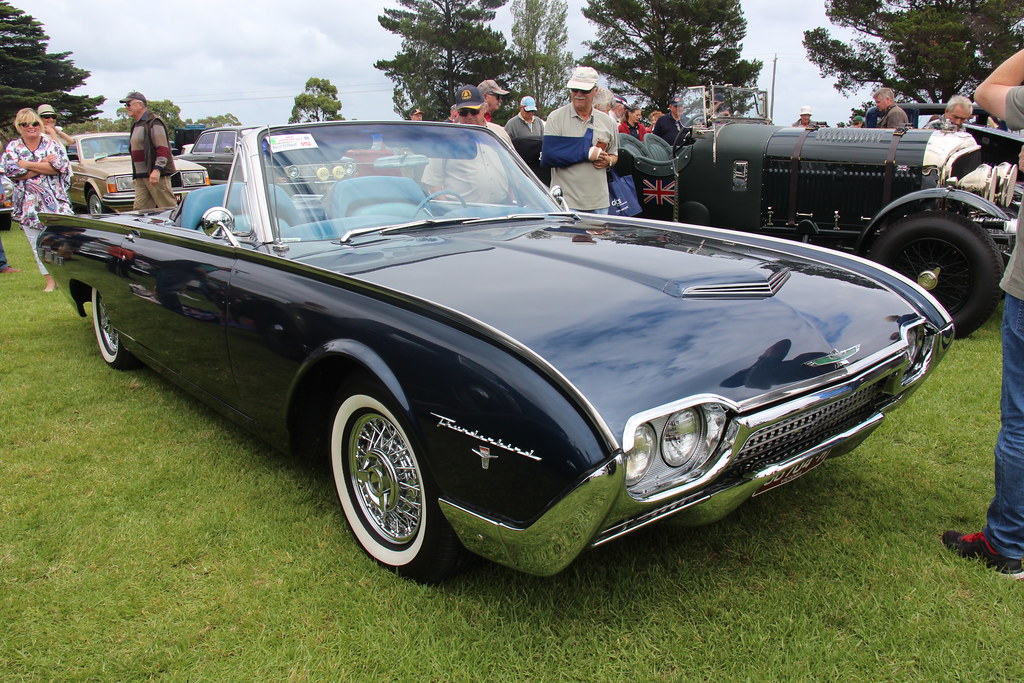
4. **Ford Thunderbird**Ford’s initial foray into retro-inspired redesigns saw the 11th-generation Thunderbird take flight between 2002 and 2005. This marked the T-Bird’s first return in five years, and it aimed directly at the heart of its original 1955 debut, emphasizing a two-seater configuration for the first time since 1957. The design cues were unmistakably classic, incorporating features like the distinct taillights from the 1961–63 generation and even the iconic porthole hardtop from the 1956 and 1957 models.
Underneath that nostalgic skin, the new Thunderbird was rear-wheel drive and shared its platform with the Lincoln LS and Jaguar S-Type sedans, both part of Ford’s portfolio at the time. Power came from a 3.9-liter, 252-horsepower V-8 engine, borrowed from its Jaguar cousin. At launch, it certainly generated a lot of attention and decent sales. Critical reviews were initially positive, with MotorTrend even naming it the Car of the Year in 2002. In its first year, Ford managed to shift almost as many Thunderbirds as Chevy did Corvettes, a seemingly strong start for a reborn legend.
However, the tide quickly turned. In 2003, sales figures plummeted to around 50% of the previous year’s numbers, a disastrous slump that the once-celebratory press was quick to pounce on. Car and Driver later famously called the Thunderbird one of its “most embarrassing award winners.” The retro-modern T-Bird, despite its promising design, struggled with a disjointed interior that simply failed to resonate with buyers. There was no coming back from such a commercial misstep, and the Thunderbird was unceremoniously axed in 2005, a cautionary tale that nostalgia alone isn’t always enough to guarantee success.
Car Model Information: 1966 Ford Thunderbird Base
Name: Ford Thunderbird
Caption: 1957 Thunderbird
Manufacturer: Ford Motor Company
Production: unbulleted list
ModelYears: unbulleted list
Class: unbulleted list
Layout: Front-engine, rear-wheel drive layout
Categories: 1960s cars, 1970s cars, 1980s cars, 1990s cars, 2000s cars
Summary: The Ford Thunderbird is a personal luxury car manufactured and marketed by Ford Motor Company for model years 1955 to 2005, with a hiatus from 1998 to 2001.
Ultimately gaining a broadly used colloquial nickname, the T-Bird, the model was introduced as a two-seat convertible, subsequently offered variously in a host of body styles including as a four-seat hardtop coupe, four-seat convertible, five-seat convertible and hardtop, four-door pillared hardtop sedan, six-passenger hardtop coupe, and five-passenger pillared coupe, before returning in its final generation, again as a two-seat convertible.
At its inception, Ford targeted the two-seat Thunderbird as an upscale model. The 1958 model year design introduced a rear seat and arguably marked the expansion of a market segment that came to be known as personal luxury cars, positioned to emphasize comfort and convenience over handling and high-speed performance.
Get more information about: Ford Thunderbird
Buying a high-performing used car >>>
Brand: Ford Model: Thunderbird
Price: $44,999 Mileage: 71,017 mi.
Read more about: The Ultimate Encore: 10 Cherished Cars That Rose From the Ashes, Reigniting Our Automotive Passion!
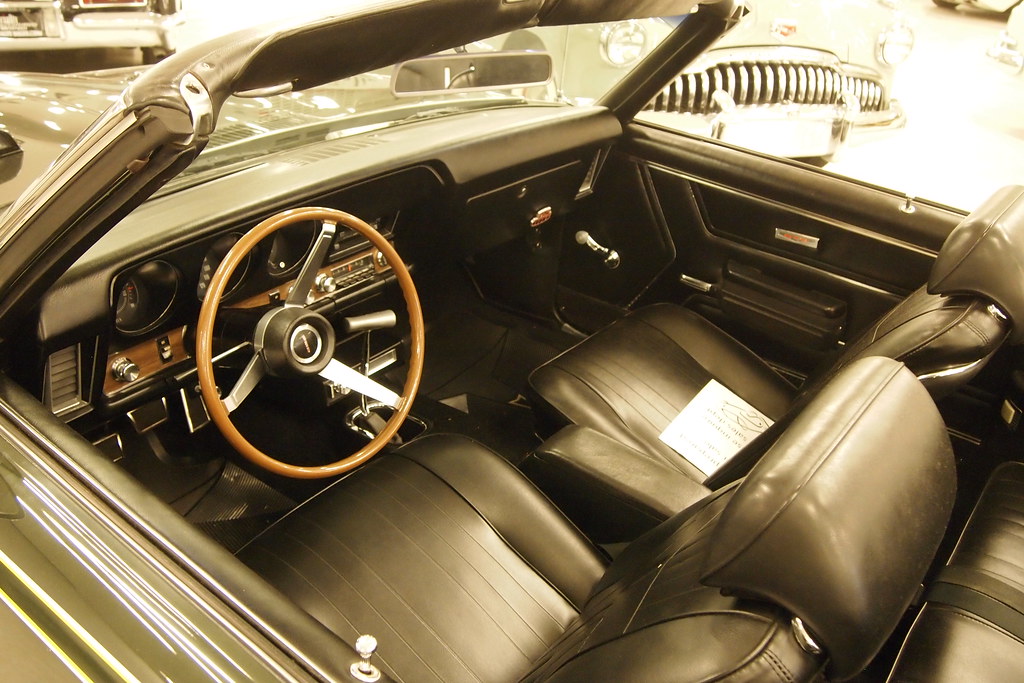
5. **Pontiac GTO**The Pontiac GTO, a nameplate synonymous with raw American muscle since the 1970s, had been absent for decades before its much-anticipated resurrection in 2004. Enthusiasts were practically salivating at the prospect of a new GTO, a car that promised to bring back the glory days of tire-shredding performance. Under its hood sat a potent LS1 V8 engine, churning out 350 horsepower, and buyers even had the choice of both automatic and manual transmission options. On paper, it had all the right ingredients to be a smash hit.
However, there was a catch, and it was a significant one: this wasn’t the all-American creation its predecessors had been. Instead, the 2004 GTO was an Aussie import, a Holden Monaro from GM’s division down under, simply rebadged for the American market. While the Monaro was a fine car in its own right, the idea of an Australian muscle car wearing the hallowed GTO badge didn’t quite sit right with purists.
To make matters worse, changing exchange rates in the wake of 9/11 meant the 2004 GTO wasn’t as cheap as GM had originally intended. It was initially pitched to compete directly with the Ford Mustang GT on price, but it ended up being notably pricier. That price difference, combined with the fact that it was an Aussie in disguise rather than a true American muscle car, was enough to dissuade a significant number of buyers. The GTO never sold as well as Pontiac had hoped, fading away once again, though it did inspire another Aussie-made successor, the G8, in 2008.
Car Model Information: 1966 Pontiac GTO Coupe
Name: Pontiac GTO
Caption: 2005 Pontiac GTO
Manufacturer: Pontiac (automobile),Holden
Class: Mid-size car,Compact car,Mid-size car
Production: 1963–1974,2003–2006
Predecessor: Pontiac Tempest
Layout: Front-engine, rear-wheel-drive layout
ModelYears: 1964-1974 2004-2006
Categories: 1970s cars, 2000s cars, All articles with unsourced statements, Articles with short description, Articles with unsourced statements from October 2008
Summary: The Pontiac GTO is a front-engine, rear-drive, two-door, and four-passenger automobile manufactured and marketed by the Pontiac division of General Motors over four generations from 1963 until 1974 in the United States — with a fifth generation made by GM’s Australian subsidiary, Holden, for the 2004 through 2006 model years.
The first generation of the GTO is credited with popularizing the muscle car market segment in the 1960s. Some consider the Pontiac GTO to have started the trend with all four domestic automakers offering a variety of competing models.
For the 1964 and 1965 model years, the GTO was an optional package on the intermediate-sized Pontiac LeMans. The 1964 GTO vehicle identification number (VIN) started with 22, while the 1965 GTO VIN began with 237. The GTO was designated as a separate Pontiac model from 1966 through 1971 (VIN 242…). It became an optional package again for the 1972 and 1973 intermediate LeMans. For 1974, the GTO was an optional trim package on the compact-sized Ventura.
The GTO model was revived for the 2004 through 2006 model years as a captive import for Pontiac, a left-hand drive version of the Holden Monaro, itself a coupé variant of the Holden Commodore.
Get more information about: Pontiac GTO
Buying a high-performing used car >>>
Brand: Pontiac Model: GTO
Price: $59,991 Mileage: 4,408 mi.
Read more about: Why Classic Car Values Are Exploding: Unpacking the Market Surge and 14 Iconic Models Skyrocketing in Price
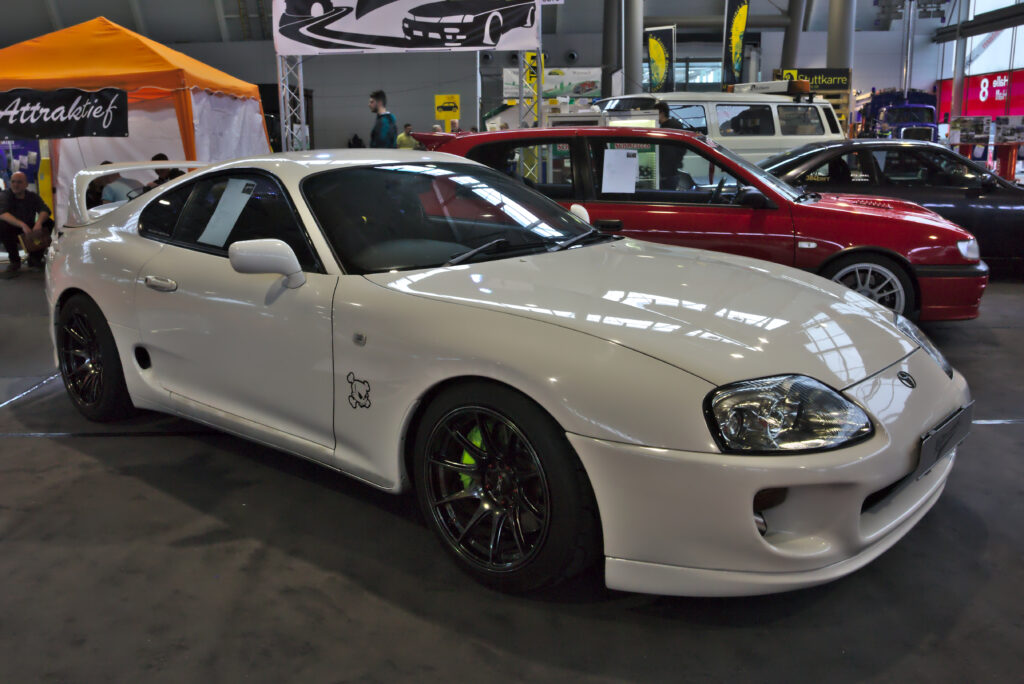
6. **Toyota Supra**Few cars stir the passions of performance enthusiasts quite like the Toyota Supra. Its predecessor, the legendary MkIV Supra, is an icon in its own right. Its 2JZ engine, particularly in twin-turbo 2JZ-GTE form, remains one of the most sought-after tuner engines around, renowned for its ability to handle immense amounts of power with minimal upgrades. This is a car that defies the old saying; they absolutely *did* make them like that, and few — if any — modern engines can match the 2JZ’s tuning potential and expansive aftermarket support. Even in stock form, pristine examples of the MkIV Supra command six-figure sums, making it a coveted collector’s item.
So, when Toyota announced the return of the Supra, the anticipation was stratospheric, and with it came sky-high expectations. The fifth-generation GR Supra, unveiled in 2019, certainly caused its share of controversy, primarily due to its shared parts with the BMW Z4. But, frankly, few Toyota enthusiasts could truly disagree that its return was ultimately a good thing for the automotive landscape.
Whether in its potent 3.0L, manual transmission guise or with a smaller engine and an automatic ‘box, the GR Supra proved itself to be a solid driver’s car, striking a commendable balance between everyday practicality and track readiness. It also looked the part, with styling that remains just as striking today as it did on its debut. While it could never fully live up to the almost mythical bar set by its forebear in the eyes of some enthusiasts, looking past those unreasonably high expectations reveals an enjoyable, competent, and temptingly priced sports car that is a worthy successor to the Supra name.
Car Model Information: 2024 Toyota Supra 3.0 Premium
Name: Toyota Supra
Caption: Toyota GR Supra (J29/DB)
Manufacturer: Toyota
Aka: unbulleted list
Production: unbulleted list
Class: Sports car
BodyStyle: fastback,coupé
Layout: Front-engine, rear-wheel-drive layout
Predecessor: Toyota Celica (A20)
Categories: 1980s cars, 1990s cars, 2000s cars, 2010s cars, 2020s cars
Summary: The Toyota Supra is a sports car and grand tourer manufactured and developed by the Toyota Motor Corporation beginning in 1978. The name “supra” is a definition from the Latin prefix, meaning “above”, “to surpass” or “go beyond”. The initial four generations of the Supra were produced from 1978 to 2002. The fifth generation has been produced since March 2019 and later went on sale in May 2019. The styling of the original Supra was derived from the Toyota Celica, but it was longer. Starting in mid-1986, the A70 Supra became a separate model from the Celica. In turn, Toyota also stopped using the prefix Celica and named the car Supra. Owing to the similarity and past of the Celica’s name, it is frequently mistaken for the Supra, and vice versa. The first, second and third generations of the Supra were assembled at the Tahara plant in Tahara, Aichi, while the fourth generation was assembled at the Motomachi plant in Toyota City. The 5th generation of the Supra is assembled alongside the G29 BMW Z4 in Graz, Austria by Magna Steyr. The Supra traces much of its roots back to the 2000GT owing to an inline-6 layout. The first three generations were offered with a direct descendant to the Crown’s and 2000GT’s M engine. Interior aspects were also similar, as was the chassis code “A”. Along with this name, Toyota also included its own logo for the Supra. It was derived from the original Celica logo, being blue instead of orange. This logo was used until January 1986, when the A70 Supra was introduced. The new logo was similar in size, with orange writing on a red background, but without the dragon design. That logo, in turn, was on Supras until 1991 when Toyota switched to its current oval company logo. The dragon logo was a Celica logo regardless of what colour it was. It appeared on the first two generations of the Supra because they were officially Toyota Celicas. The dragon logo was used for the Celica line until it was also discontinued. In 1998, Toyota ceased sales of the fourth-generation Supra in the United States. Production of the fourth-generation Supra for worldwide markets ended in 2002. In January 2019, the fifth-generation Supra, which was co-developed with the G29 BMW Z4, was introduced.
Get more information about: Toyota Supra
Buying a high-performing used car >>>
Brand: Toyota Model: Supra
Price: $59,995 Mileage: 1,454 mi.
Read more about: Beyond the Hype: Why Savvy Celebrity Collectors Are Investing Big in Vintage Japanese Sports Cars and What It Means for Your Portfolio

7. **GMC Hummer**Speaking of comebacks that defy expectations, who could have predicted the return of the Hummer? The original Hummer, in its H1, H2, and H3 iterations, was arguably the most excessive, gas-guzzling SUV available, becoming the poster child for automotive indulgence. Its image was so ingrained in the public consciousness that it seemed like the absolute last candidate to ever receive an all-electric successor. Yet, more than a decade after the original models were relegated to the archives, the GMC Hummer EV roared back, not just as an SUV, but also in truck form.
We’ve put it through its paces, and frankly, we weren’t entirely convinced that the latest Hummer’s real-world practicality — or rather, the distinct lack of it — fully justified its eye-watering asking price. There are, let’s be honest, many other six-figure super-SUVs on the market that boast superior on-road handling, much better family-hauling capability, and more high-end luxury features. The Hummer, however, operates on a different wavelength entirely; its unique selling proposition is precisely that it doesn’t make logical sense, and that’s part of its undeniable charm.
Its famous “crab walk” feature and ridiculously oversized stature aside, there isn’t really anything that fundamentally makes the Hummer EV *better* than other, more mainstream electric SUVs and trucks. But evidently, these outlandish features alone are enough to seal the deal for plenty of buyers. GMC sold almost 14,000 of these over-the-top off-roaders in 2024, unequivocally proving that there’s a sizeable market out there for what is, quite arguably, the most gloriously nonsensical EV currently available. And honestly, we love it for that.
The automotive world’s love affair with the past isn’t slowing down, and frankly, we’re all here for it! If the first seven entries ignited your passion for reborn legends, then buckle up, because we’re just getting started. This isn’t merely about dusting off old badges; it’s about engineering new dreams, revisiting classic lines with modern eyes, and in some cases, completely reinventing what a cherished nameplate can be. We’re about to peel back the layers on another seven incredible stories, diving deep into how these iconic body styles roared back to life, sometimes for better, sometimes with a few head-scratching detours, but always with a spirit that resonates with enthusiasts. Let’s roll!
Car Model Information: 2025 Audi Q7 55 Premium Plus
Name: GMC Hummer EV
Caption: 2024 GMC Hummer EV3X (SUV)
Designer: Rick Scheer (director of design)
Powerout: 1000 hp
Abbr: on (SUV)
Battery: Ultium
Motor: Ultium Drive
ElectricRange: convert
Height: 79.1 in
Width: 86.46 in
Length: 196.8 in
Wheelbase: 126.7 in
Weight: Convert
Transmission: Single-speed
Related: Chevrolet Silverado EV,Cadillac Escalade IQ
Platform: General Motors BT1 platform
Predecessor: Hummer H2
Layout: Unbulleted list
BodyStyle: pickup truck
Class: Pickup_truck#Full-size_pickup_truck,Full-size SUV
Assembly: Detroit, Michigan
ModelYears: 2022–present
Production: November 2021 – present
Manufacturer: GMC (marque)
Sp: us
Charging: unbulleted list
Categories: All Wikipedia articles written in American English, All articles with unsourced statements, Articles with short description, Articles with trivia sections from November 2023, Articles with unsourced statements from April 2023
Summary: The GMC Hummer EV (badged as HEV) is a line of battery electric heavy-duty vehicles produced by General Motors since 2021, and sold under the GMC mark. The Hummer EV is offered in two variants: a pickup truck and a sport utility vehicle (SUV), unveiled in October 2020 and April 2021 respectively.
Weighing roughly 10,000 pounds (4,500 kg), the Hummer EV is among the heaviest consumer automobiles currently sold in the United States. Its size, mass, and acceleration have led to concerns regarding the danger it poses to other users on the road in the event of a collision, as well as its efficiency and environmental affects.
Get more information about: GMC Hummer EV
Buying a high-performing used car >>>
Brand: GMC Model: Hummer EV
Price: $55,675 Mileage: 20,490 mi.
Read more about: The Ultimate Encore: 10 Cherished Cars That Rose From the Ashes, Reigniting Our Automotive Passion!
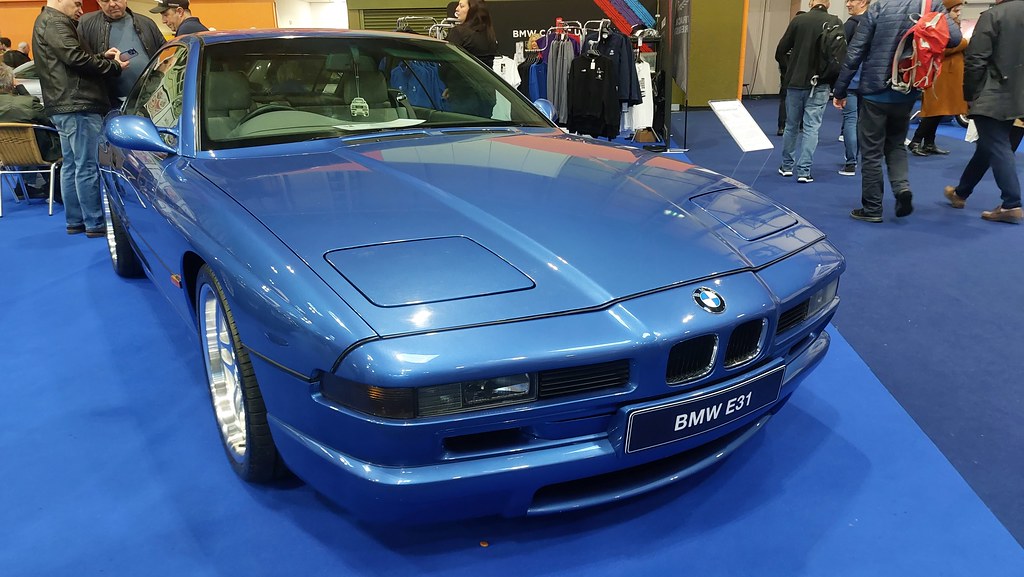
8. **BMW 8-Series**Hitting American dealerships for the 1990 model year, the original 8-Series was a high-water mark for the brand. This car wasn’t just another luxury coupe; it was mechanically groundbreaking, being only the second ever BMW model to feature a V12 engine. Visually, it was unprecedented, boasting a sleeker, more futuristic design than anything else in the brand’s lineup at the time, truly setting it apart from its contemporaries and leaving a lasting impression.
Its significance extends beyond its technical prowess and stunning looks. The most desirable variant of the original 8-Series, the 850CSi, has already cemented its place as a sought-after collector’s car, with average resale values today hovering close to $100,000. It speaks volumes about its enduring appeal that a car from that era still commands such respect and value, a testament to its initial impact and how deeply it resonated with discerning drivers.
When BMW decided to revive the 8-Series, the weight of that legacy was palpable. The revived 8-Series, while not featuring a V12 under its hood – a choice that some purists might lament – did introduce something the original never received: an M-badged variant. This was a bold move, signaling a shift towards a more overt performance focus, aiming to capture a new generation of enthusiasts while nodding to the past.
We spent some quality time with the current generation M8 Competition Coupe back in 2020, and let us tell you, it absolutely grabbed as much attention as many of the most sought-after Italian supercars. Especially with a brightly colored paint scheme, it was a head-turner, proving that even without the V12, the 8-Series can still command presence. It’s certainly as distinctive, luxurious, and pricey as the original, standing as a testament that evolution, even without every original ingredient, can still deliver a compelling and undeniably BMW experience.
Car Model Information: 2025 BMW 840 i xDrive
Name: BMW 8 Series
Production: 1990–1999,2018–present
Class: Grand tourer
BodyStyle: coupé,convertible,Sedan (automobile)
Layout: Rear-wheel drive,All-wheel drive
Categories: Articles with short description, BMW vehicle series, CS1 German-language sources (de), Commons category link is on Wikidata, Coupés
Summary: The BMW 8 Series is a range of grand tourer coupes and convertibles produced by BMW.
The 8 Series was introduced in 1990 under the E31 model code and was only available as a two-door coupé. It is powered by a range of naturally aspirated V8 and V12 petrol engines. The E31 started production just as E24 6 Series production ended; however, it is not considered a direct successor. The E31 was discontinued in 1999 due to poor sales.
The model range was later reintroduced in 2018 with the second generation, G15 8 Series. It launched in coupé (G15), convertible (G14), and four-door Gran Coupé (G16) body styles, as the successor to the F06/F12/F13 6 Series lineup. The G15 8 Series introduces an inline-six diesel engine, and a high-performance BMW M8 trim later joined the lineup as well as the luxury inspired Alpina B8.
Get more information about: BMW 8 Series
Buying a high-performing used car >>>
Brand: BMW Model: 8-Series
Price: $82,490 Mileage: 14,526 mi.
Read more about: The Ultimate Encore: 10 Cherished Cars That Rose From the Ashes, Reigniting Our Automotive Passion!
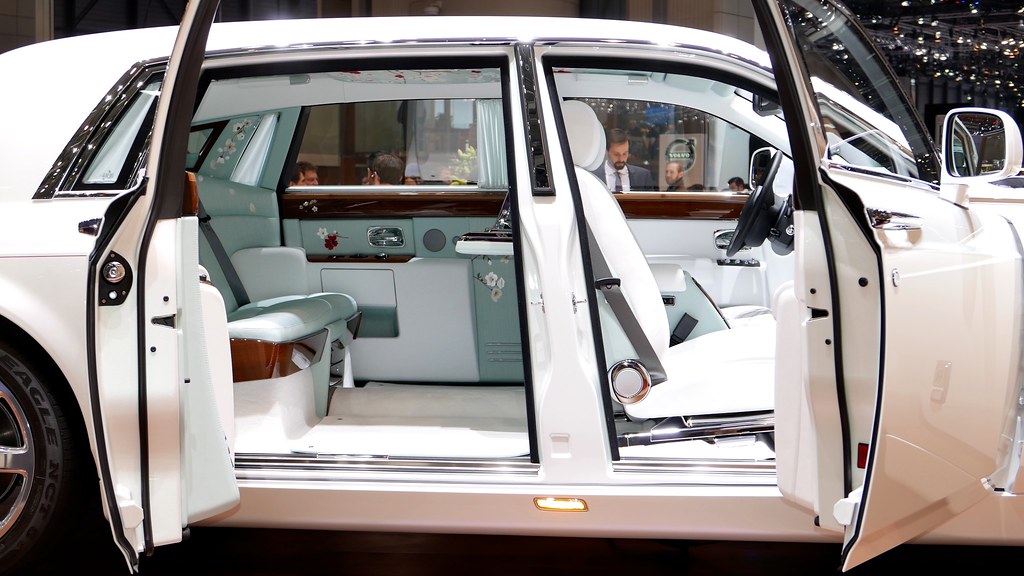
9. **Rolls-Royce Phantom**Rolls-Royce is set to celebrate the 100th anniversary of the Phantom nameplate in 2025, a truly remarkable milestone in automotive history. This illustrious name was originally coined to distinguish the brand’s highest-end car from its other supernatural-themed offering, the Silver Ghost, immediately positioning it as the pinnacle of luxury and engineering. It’s a name that has come to embody unparalleled elegance and bespoke craftsmanship for an entire century.
The Phantom’s journey has been punctuated by periods of quiet and grand re-entries. It was temporarily discontinued during the Second World War, only to be brought back as an exclusive model, initially serving the British Royal family. This fourth-generation Phantom is, in fact, the rarest of them all, with only 18 examples ever built, underscoring its profound exclusivity and historical significance.
The subsequent Phantom V, launched in 1959, marked a return to public sale, although naturally, only the wealthiest businesspeople and heads of state could truly afford such a magnificent machine. It held its own for over a decade before being replaced by the Phantom VI, which would turn out to be the last generation of the car before its second, decade-long discontinuation. The last Phantom VI, according to Rolls-Royce, was built in 1993 and delivered to the Sultan of Brunei, a fittingly opulent end to that chapter.
Then came the grandest resurrection of them all. The nameplate was retired for a spell before being gloriously brought back to spearhead the brand’s 2003 relaunch under BMW ownership. The Phantom VII was a radical departure from its predecessors, embracing modern styling cues and featuring a spaceframe chassis, yet it somehow retained every ounce of its inherent opulence. It proved an undeniable hit with buyers, validating the bold new direction.
Today, the latest generation, the Phantom VIII, unveiled in 2017, continues this storied legacy, remaining in production. As expected, it certainly doesn’t come cheap; prices start north of $500,000, and with custom commissions, they can easily stretch far higher. This car isn’t just transport; it’s a statement, a rolling piece of art, and a continuation of a century of automotive excellence that few, if any, other marques can rival.
Read more about: The Ultimate Encore: 10 Cherished Cars That Rose From the Ashes, Reigniting Our Automotive Passion!

10. **Alpine A110**The A110 name made a triumphant return in 2016 after decades away from the automotive spotlight, a comeback that genuinely excited enthusiasts who remembered its rallying glory. The original ’60s car wasn’t just a sports car; it was a legend, winning the first-ever WRC event, a true testament to its agility and performance. Its successor, however, aimed to be more of an all-rounder, a modern interpretation that could be enjoyed both on the track and on winding roads.
What makes the new A110 so compelling is its clever engineering. It borrows parts from other Renault Group vehicles, including its engine, which helps to keep costs down. But don’t let that fool you; its chassis and suspension were uniquely designed with the expert help of British sports car maker Caterham. This thoughtful mix of shared components and bespoke design allowed Alpine to position it competitively, putting it squarely in line with the Porsche Cayman, a formidable rival.
Under the hood, the A110’s engine may only have a modest 1.8L displacement, but Alpine engineers have cranked it up to provide a robust 300 horsepower. This isn’t a car that relies on sheer brute force; instead, it’s about balance, lightweight construction, and an engaging driving experience. It’s a pure driver’s car, designed to prioritize enjoyment over raw power figures or the kind of technological party tricks that often overwhelm modern vehicles.
Sadly, for our friends across the pond, the Alpine A110 isn’t officially available in America. Thanks to the dreaded 25-year import rule, it will be a long while before Americans can legally bring one over. In Europe, the car remains in production for now, although the looming specter of upcoming electrification rules means that its future is, regrettably, uncertain. But whether it ultimately survives or not, the A110 is a rare breed of sports car that prioritizes driver enjoyment, a philosophy that deserves immense appreciation while it’s still around.
Read more about: The Ultimate Encore: 10 Cherished Cars That Rose From the Ashes, Reigniting Our Automotive Passion!
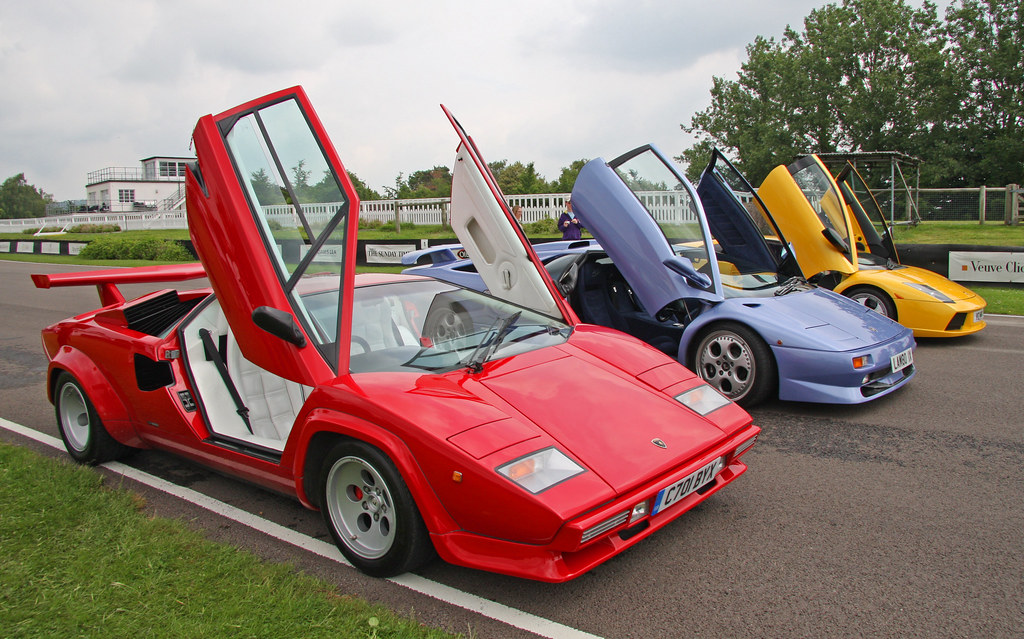
11. **Lamborghini Countach**When Lamborghini announced the return of the Countach, it sent shockwaves through the hypercar world. Brought back as an ultra-limited special edition a full five decades after the original was launched, the 2022 Lamborghini Countach LPI 800-4 was a masterclass in drawing inspiration from history. It borrowed undeniable design cues from its iconic predecessor, ensuring that unmistakable wedge profile and dramatic lines were immediately recognizable, a true homage to the legend.
However, while it honored the aesthetics, it certainly didn’t borrow the engine design in a literal sense, instead opting for a thoroughly modern interpretation. The original ’70s car started with a 4.0L V12 engine, with later versions upping that displacement to as much as 5.2L. The 2022 Countach, by contrast, boasts a hybrid 6.5L V12 powertrain, a testament to how far technology has progressed while still retaining that glorious V12 heart.
This potent combination of combustion and electric power results in a total system output of an astonishing 803 horsepower, propelling the resurrected Countach into true hypercar territory. While it might be a technologically impressive machine, and with only 112 examples ever produced, it’s also impressively rare, even by hypercar standards. This exclusivity alone ensures its status as a collector’s dream, a modern marvel destined for future veneration.
Yet, it’s arguably not as groundbreaking as the original, which truly reshaped automotive design with its Bertone-penned bodywork and the outlandish scissor doors that were utterly unique for a production car at the time. The original Countach was a revolution; the new one is an evolution, albeit a spectacular one. Nonetheless, the modern Countach was an immediate hit with wealthy collectors, demonstrating the power of a legendary name. While examples today cost around $2 million, it’s a notable drop from the reported $2.64 million retail price of the car back in 2022, reminding us that even the most exclusive metal can see value fluctuations.
Car Model Information: 1986 Lamborghini Countach LP5000 Quattrovalvole
Name: Lamborghini Countach
Caption: Lamborghini Countach LP5000 QV
Manufacturer: Lamborghini
Production: 1974–1990
Assembly: Sant’Agata Bolognese
Designer: Marcello Gandini
Class: Sports car
BodyStyle: coupe
Layout: Longitudinal engine,mid-engine,rear-wheel-drive
Related: Lamborghini LM002
Engine: Lamborghini V12,V12 engine,LP400, LP400 S: {{cvt,3929,cc,L,1,disp=flip
Transmission: synchromesh,Manual transmission
Wheelbase: 96.46 in
Abbr: on (LP5000QV)
Order: flip
Length: 162.99 in
Width: LP 400: {{cvt,74.28,in,mm,0,abbr=on,order=flip
Height: 42.13 in
Weight: {{convert,1300.5,kg,lb,0,abbr=on
Predecessor: Lamborghini Miura
Successor: Lamborghini Diablo
Doors: Scissor doors
Sp: uk
Categories: 1980s cars, 1990s cars, All articles with unsourced statements, Articles containing Italian-language text, Articles containing Piedmontese-language text
Summary: The Lamborghini Countach ( KOON-tahsh) is a rear mid-engine, rear-wheel-drive sports car produced by the Italian automobile manufacturer Lamborghini from 1974 until 1990. It is one of the many exotic designs developed by Italian design house Bertone, which pioneered and popularized the sharply angled “Italian Wedge” shape.
The wedge style was introduced to the public in 1970 with the Lancia Stratos Zero concept car. The first showing of the Countach prototype was at the 1971 Geneva Motor Show, as the Lamborghini LP500 concept.
The “Countach” nameplate was reused for the Sián-based limited-production hybrid-electric model called the Countach LPI 800-4 in 2021.
Get more information about: Lamborghini Countach
Buying a high-performing used car >>>
Brand: Lamborghini Model: Countach
Price: $674,900 Mileage: 15,743 mi.
Read more about: The Ultimate Encore: 10 Cherished Cars That Rose From the Ashes, Reigniting Our Automotive Passion!
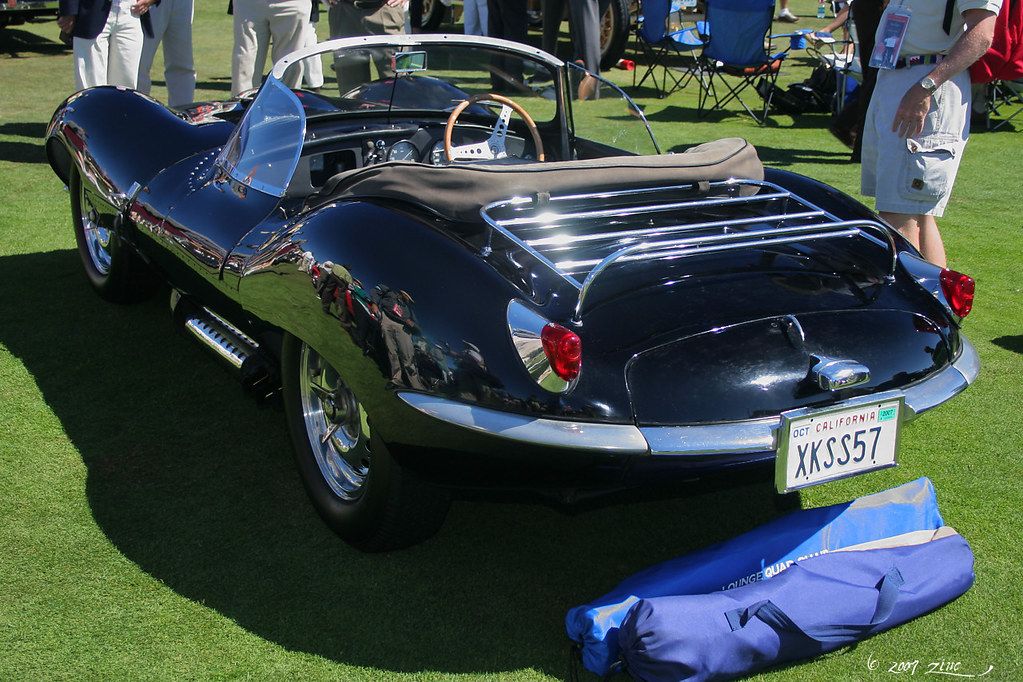
12. **Jaguar XKSS**Here’s a resurrection story that’s truly unique, a fascinating blend of history, tragedy, and meticulous craftsmanship. A devastating factory fire in 1967 saw nine of the original 25 Jaguar XKSS road cars tragically destroyed. For decades, those nine chassis numbers remained unfilled, leaving the total production run at a mere 16 cars, a haunting gap in an otherwise glorious automotive lineage.
Then, in 2016, Jaguar made an announcement that thrilled classic car enthusiasts and historians alike: it was rebuilding the final nine cars. This wasn’t a modern reimagining, but a faithful continuation, utilizing a masterful mix of modern and classic construction methods. Each one was designed to be as period correct as humanly possible, a true testament to historical accuracy and dedication.
Most cars that are brought back from the dead arrive in the form of a new generation, complete with fresh styling and cutting-edge technology. But with the XKSS, Jaguar’s singular aim was to make the revived car as close to the original as it could possibly be. This meant obsessing over every detail, from the materials used to the construction techniques, ensuring an almost indistinguishable connection to its 1960s brethren.
The brand even went as far as 3D scanning multiple examples of the original car, painstakingly accounting for any minute inconsistencies between the initial production run, cataloging every single part with incredible precision. By the time the continuation was officially announced, all nine examples of the new run had already been sold, each fetching more than $1 million apiece. That might seem like a steep price, but when you consider that original examples of the XKSS and its race-spec counterpart, the D-Type, have sold for multiple times more at auction, it’s clear these are pieces of living automotive history, lovingly recreated for a new generation.
Read more about: The Ultimate Encore: 10 Cherished Cars That Rose From the Ashes, Reigniting Our Automotive Passion!
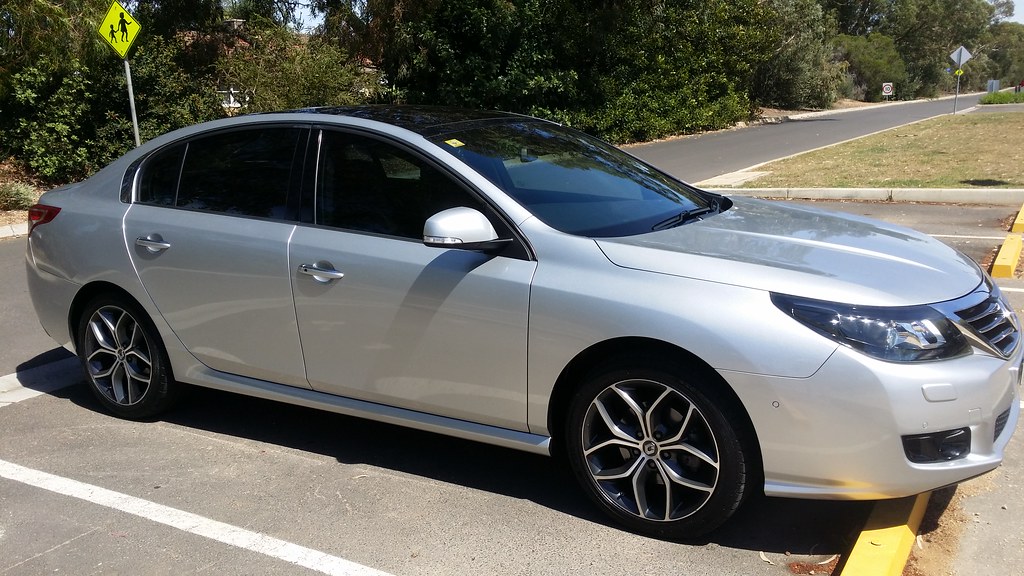
13. **Renault 5**The original Renault 5 wasn’t just a car; it was a brand-defining icon for Renault, a vehicle that became synonymous with accessible, stylish French motoring. Introduced in 1972, it was an undeniable success, selling over 5.5 million examples before its discontinuation in 1985. At the peak of its popularity in 1980, it astonishingly became the second highest-selling car across the globe, a truly remarkable achievement for a humble city car.
Resurrecting such a beloved name was undoubtedly a significant risk, a challenge that Renault seemed acutely aware of. However, they rose to the occasion, putting all of their considerable design and engineering might behind the relaunched 5. The result is nothing short of brilliant: a funky, all-electric city car that beautifully captures the spirit of its predecessor, starting from the equivalent of $31,000 in Europe.
Underneath its retro-futuristic skin, the new 5 features a modest electric powertrain, delivering around 150 horsepower in top-spec trims. But here’s the kicker: it weighs a mere 3,200 pounds, which is a featherweight in the EV world. This means that its power output is more than enough to make the 5 feel incredibly zippy and agile for urban jaunts, making it a joy to navigate bustling city streets.
It’s available in a choice of vibrant colors, with bright yellow and green among the launch palette, truly embodying that playful, original R5 spirit. And in case it wasn’t already French enough for you, there’s even an optional baguette holder cleverly hidden in the options list – a delightful, whimsical touch that screams personality. While it’s still early to definitively call it a sales success, the initial signs are incredibly promising: data from March 2025 shows the 5 as the best-selling EV in France, a fantastic start for a modern legend.
But wait, there’s more! Renault has also announced a super-hatch version of the 5, dubbed the 5 Turbo 3E, which is a wild, rear-wheel-drive beast boasting 500 horsepower. Despite a price tag stretching comfortably into six-figure territory, the brand has already sold every single one of its initial production batch, proving that there’s an insatiable appetite for audacious electric performance. With plans to cap production at 1,980 examples and deliveries of the first cars beginning in 2026, the spirit of the original R5 Turbo lives on, louder and more electrifying than ever.
Read more about: Built to Last: 10 Legendary Vehicles That Rarely Need a Major Engine Overhaul
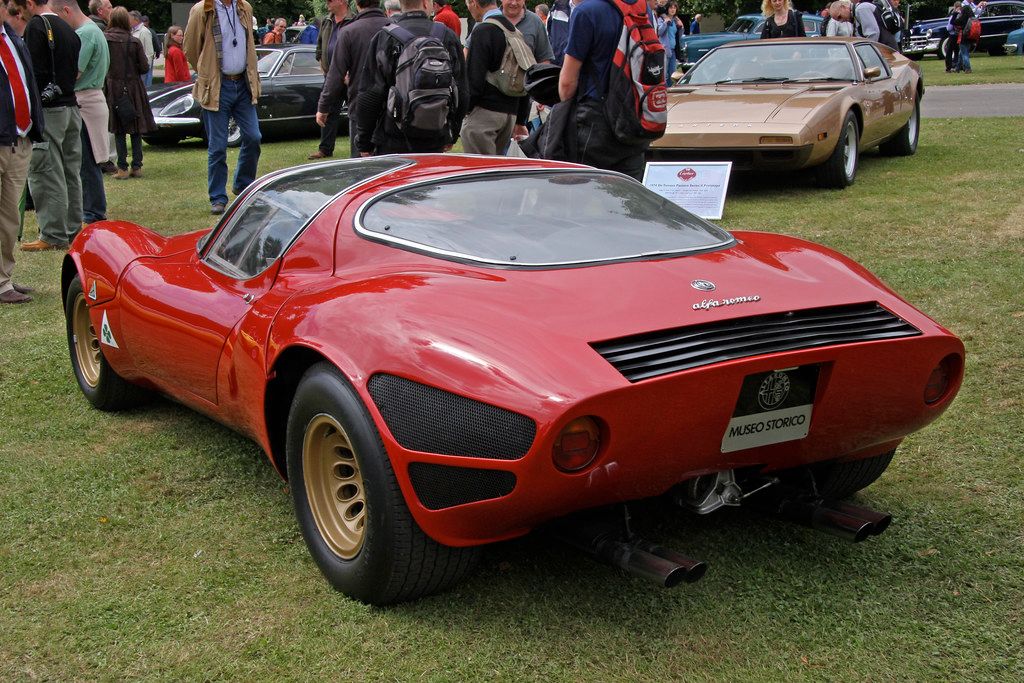
14. **Alfa Romeo 33 Stradale**When we talk about automotive legends, the original Alfa Romeo 33 Stradale sits in a league of its own, a multi-million-dollar classic race car that commands immense respect. To honor such an unparalleled icon, the brand launched a modern interpretation: a multi-million-dollar hypercar. Now, one might argue this isn’t exactly revolutionary in terms of concept, but we firmly believe that the new Alfa Romeo 33 Stradale is absolutely worth its huge price tag and the profound reverence it deserves.
The ’60s classic was a road-homologated variant of Alfa Romeo’s hugely successful race car of the same name, a machine of exquisite beauty and formidable performance, with just 18 examples ever built. The latest version, while not boasting the exact same racing DNA in its creation, is just as rare and exclusive, with production meticulously capped at only 33 cars, ensuring its place as an instant collector’s item.
What truly sets this limited-run hypercar apart, making it unusually fascinating, is the offering of two entirely distinct powertrains. One option caters to traditionalists: a potent combustion powerplant, specifically a twin-turbo 3.0L V6, promising exhilarating, visceral performance. The other is an all-electric drivetrain, a bold embrace of future technology, allowing buyers to choose their preferred flavor of high-performance motoring.
Every single example of this magnificent car has already been sold, a clear indicator of its desirability and the enduring allure of the Alfa Romeo badge. Intriguingly, Alfa hasn’t disclosed how many buyers picked the electric option versus those who preferred the traditional gas-powered variant, leaving us to wonder about the split. They also haven’t disclosed exact pricing, though it’s widely thought to be around $1 million. Regardless of the chosen powertrain or the precise cost, the 33 Stradale is a breathtaking testament to Alfa Romeo’s heritage and its audacious vision for the future.
Car Model Information: 2025 Audi Q7 55 Premium Plus
Name: Alfa Romeo 33 Stradale
Manufacturer: Alfa Romeo
Production: November 1967 – March 1969,18 produced
Assembly: Milan
Designer: Franco Scaglione
Class: Sports car
BodyStyle: coupé
Related: Alfa Romeo Tipo 33
Layout: Rear mid-engine, rear-wheel drive layout
Engine: V8 engine
Transmission: Colotti Trasmissioni,Manual transmission
Wheelbase: 2350 mm
Abbr: on
Length: 3970 mm
Width: 1710 mm
Height: 991 mm
Weight: 700 kg
Successor: Alfa Romeo 33 Stradale (2023)
Doors: Butterfly doors
Categories: 1960s cars, Alfa Romeo vehicles, All articles with unsourced statements, Articles with short description, Articles with unsourced statements from January 2023
Summary: The Alfa Romeo 33 Stradale is a mid-engine sports car built by Italian automobile manufacturer Alfa Romeo. It was the fastest commercially available car for the standing kilometer upon its introduction. 18 examples were produced between 1967 and 1969. “Stradale” (Italian for “road-going”) is a term often used by Italian car manufacturers to indicate a street-legal version of a racing car; indeed the 33 Stradale was derived from the Tipo 33 sports prototype. Built in an attempt by Alfa Romeo to make some of its racing technology available to the public, it was also the most expensive automobile for sale to the public in 1968 at US$17,000 (equivalent to $153,700 in 2024).
Get more information about: Alfa Romeo 33 Stradale
Buying a high-performing used car >>>
Brand: Alfa Romeo Model: 33 Stradale
Price: $55,675 Mileage: 20,490 mi.
Read more about: The Gold Standard: 15 Vintage Rides That Have Only Gotten More Valuable and Cooler
And there you have it, folks – another thrilling collection of automotive phoenixes that have soared back from the ashes! From the sophisticated return of the BMW 8-Series and the ultimate luxury of the Rolls-Royce Phantom, to the driver-focused Alpine A110, the outrageous Lamborghini Countach, the painstakingly recreated Jaguar XKSS, the cheeky electric Renault 5, and the dual-powertrain marvel that is the Alfa Romeo 33 Stradale – each story is a testament to the enduring power of design, the pull of nostalgia, and the relentless pursuit of innovation. The automotive landscape is truly richer for their presence, proving that sometimes, the best way forward is to look back, embrace the magic, and build something spectacular that lives up to the legend. Here’s to more iconic comebacks, because honestly, who doesn’t love a good revival story?


